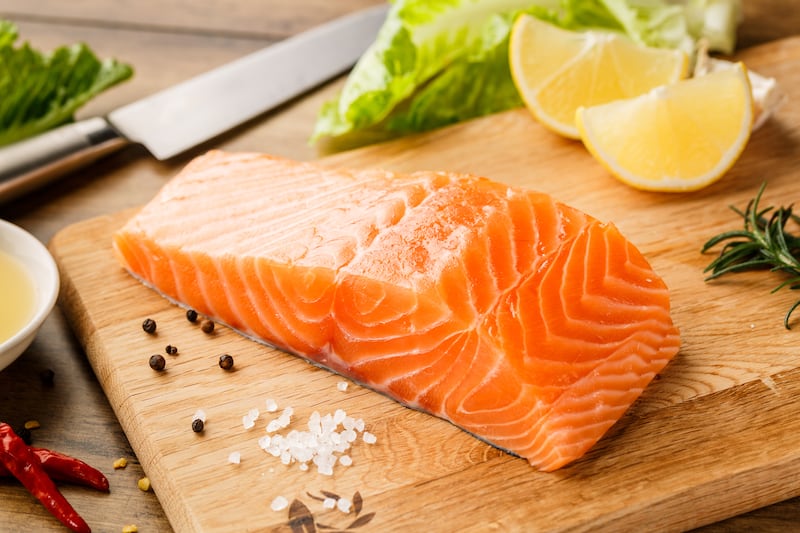There was a time when this page had the playing field pretty much to itself when it came to giving out about the cost of everything.
But as the cost-of-living crisis has dragged on and worsened, everyone seems to be price watching these days. And that’s not a bad thing.
More people switching from company A to company B to save a few bob or swapping in own-brand for more expensive branded products and finding the cheapest retailer can go a long way towards keeping companies on their toes and encouraging them to offer us the best – or at least marginally better – value for money possible.
It might even see some prices fall in the weeks ahead.
READ MORE
Lately there has been a sharp focus on the price of groceries, energy and mortgages but the rising price of a cup of coffee, a sandwich or a pastry bought in a cafe or a glass of wine served in a pub has really irked people.
We’ll start with a long and interesting mail we received from a reader we shall call Ben.
Ben has been working in the consumer goods arena for more than four decades and would be very familiar with some well-known brands, so he knows a thing or two about how pricing in Ireland works, from a producer, supplier and retail perspective.
[ Explainer: What is the Retail Forum and could it lead to lower grocery prices?Opens in new window ]
But he starts his story in New York city by suggesting that “price gouging is currently near universal and it would appear that Ireland’s prices are now indexed to its meteoric rise in GDP rather than inflation – but it is not alone”.
Not long ago he was charged $9 for 330ml of beer in the Big Apple. “With the near mandatory minimum tip of 15 per cent, that becomes $10.35 or $17.68 for a pint. Temple Bar does not come close.”
Ben says the “cost of the NYC rent was not such a factor in this case as my wife and I were sat at a table close to (exactly 13 inches from) the next one, where despite the noise we were regaled with the conversation of the two women beside us and their difficulties and challenges in both the bedroom and their marriages in general.”
Shortage has driven prices - not cost. Similarly the energy cost of transportation and refrigeration may contribute a couple of percentage points but nothing like the doubling or trebling seen
— "Ben"
Much as we would like to hear more about that, Ben swiftly moves on, taking us back to Ireland.
“The debate about milk and butter prices is hilarious,” he writes before offering “some pointers” about the price of butter.
“Raw milk is purchased from farmers on the basis of protein and fat content. This is currently approximately 50 cent a litre. Liquid milk is sold as skimmed, semi-skimmed or full fat, generally all at the same price. This means that the fat removed in the first two and used for butter is essentially free,” he suggests.
“In the last year the price for butter has rocketed but the basis for this increase cannot be justified by raw material cost, as that’s essentially free. The increase in energy costs may contribute a proportion but that cannot be more than a percentage point or two as it is such a small proportion of a butter manufacturer’s cost. Milk processing is extremely efficient compared to other foods and consumer goods.”
Ben says that “even in the case of milk powder – much is sold as skimmed milk powder- so butter fat is again provided at low cost so why has butter risen in price?”
He argues that “shortage has driven prices – not cost. Similarly the energy cost of transportation and refrigeration may contribute a couple of percentage points but nothing like the doubling or trebling seen.”
[ No promise on price cuts as supermarkets meet Minister at Retail ForumOpens in new window ]
He says that the “overall problem in Irish pricing is that it is ‘percentage-plus-cost model’ where the cost of the product being manufactured is typically 30 per cent raw materials, 30 per cent processing, 30 per cent packaging and the remaining 10 per cent being transport and excises/duties etc.”
He stresses that this is a general rule of thumb and the percentages may vary slightly. “This is then typically doubled to give the factory gate price and a 50 per cent gross margin.”
He says that “when said product arrives at the wholesaler a margin is applied to give a wholesaler price. In the recent past no one has challenged why the wholesaler percentage margin has remained the same for an increase in base price. This has the effect of magnifying the nominal price increase of inputs, without justification.”
Ben also points out that the product “then goes to retail and again – and rather lazily – a margin is applied. This has a further magnification of input costs from producer without justification being required or provided.”
Look at the supplier and retailer profit margins, the VAT receipts and corporate tax receipts. They are all up. It’s a good news story for everyone except for the poor eejits paying this every week at the supermarket and restaurants
— Ben
He says supermarket costs “are based mainly on rent/lease and staff costs and, other than extra staffing costs for Covid, their salaries have been held at or near minimum wage level and rents haven’t changed. There has been an increase in energy costs but nothing to justify the increases being seen.”
Ben accepts that at this point readers might be asking for evidence of what he has to say.
He has some to hand. “Look at the supplier and retailer profit margins, the VAT receipts and corporate tax receipts. They are all up. It’s a good news story for everyone except for the poor eejits paying this every week at the supermarket and restaurants. For too long Ireland has been seen as Treasure Island by the retailers.”
That phrase is one we have used regularly on this page over the past decade or so. Ireland was called Treasure Island by executives of large multinational shops, so large were the profit margins compared with their home countries. We’re not sure if they still call Ireland Treasure Island because it is not a phrase they ever used in a public forum.
Ben has more “hilarious examples in Ireland” of pricing he suggests do not tot up.
He points to wood pellets for domestic heating. He says wood pellets are from trees that have taken 20-30 years to grow but have doubled in price at retail in the past year. “Again energy and fuel have played a part as this stuff is kiln dried, but how can a doubling of oil prices in the past year cause a doubling of the cost of a commodity which was cut down two years ago and where energy is only a minor part of the equation? Please don’t tell me it’s staff costs in forestry!”
The one thing that we can all agree on is that none of these restaurants and bars are gone because they were making too much money
— Pat Crotty, a Kilkenny restaurateur
Another reader mails us in defence of restaurants.
Pat Crotty runs a bar and restaurant in Kilkenny and he says he was in two minds about getting in touch at all.
“I am loath to raise my head above the parapet about price gouging because it at least indicates masochistic tendencies if not an actual death wish,” he begins. “There is very little sympathy for people in business – and I’m not looking for any. But a little empathy for what can be a precarious existence would be welcome.”
He highlights a “few realities that should, but don’t, garner any understanding.
“The most obvious one is that over 50 per cent of new restaurants fail within the first year. And nearly 80 per cent are gone before their fifth anniversary. These are pre-Covid figures – Covid effects haven’t washed out yet, and I would be very worried about the endgame after VAT reverts to 13.5 per cent and tax warehousing payback depress matters further.
“We have also lost nearly a quarter of all pubs since the turn of the century. The one thing that we can all agree on is that none of these restaurants and bars are gone because they were making too much money,” he says, quite reasonably.
“There are cultural and demographic issues involved, not to mention different cost bases that all affect the price of the product offered,” he says. “A €2 burger could be very bad value and a night in Patrick Guilbaud’s could be the most wonderful food experience you ever had. So, while price is important, the perceived value for the total experience of product, service and ambience is far more so.”
[ Irish workers’ wages lag behind inflation as executive pay booms - OxfamOpens in new window ]
He then moves on to wages. “The same parent who rails in your column about the price of something also wonders why we only pay €12.30 (€11.30 minimum wage plus 8 per cent per hour holiday entitlement) to their college-going child for holiday work. They are also the ones who will recount the story of the value they got in Spain (our minimum wage is 50 per cent more), Portugal (our minimum wage is 115 per cent more) or flavour of the year Croatia (we pay 173 per cent more) but they forget the often very expensive experiences they had in these lovely places too.”
Crotty says that the Government also point the finger at businesses “while they exacerbate the issue”.
He says sick pay is a good idea but “in customer-facing businesses, the sick person must be replaced now (doubling the cost of the scheme) or the business stops earning. In an office (legal, accounting, etc) the file will wait until tomorrow and the billing will still happen at no extra labour cost.”
He also highlights compulsory pension contributions, which he says “are also a good idea, but they are going to increase the cost of labour – already the biggest cost centre in most businesses. A significant increase in the cost of employment will find its way to the price line.
“You can add government failure to act on insurance reform, too, as many businesses, particularly in hospitality, have seen this cost multiply over the last few years. Some operators have trouble getting cover at all. We were closed for almost a year between 2020 and 2021 due to Covid and got a paltry rebate from our insurer despite having no product or public liability risk during that time.”
He says that all of these issues are things he deals with every day. “I also deal with food costs fluctuating dramatically without changing my menu price to match. I support as many local suppliers as I can, even though there are cheaper options. I still try to support as many voluntary, sporting and generally good causes as I can on a weekly basis and, having survived for 27 years, I hope I will be here for another while by trying to make sure most people can afford to support my business.”

We have heard from other people who are keen to highlight high prices.
“Greetings from Alice Springs,” starts a cheery mail from John Crofton. “I left Dublin in 1970 but come back for a visit most years. My last trip was in October last year.”
On that trip he stayed in a hotel a short distance from Dublin city centre. “The hotel was fine. The problem was with their restaurant,” he writes. “I went in at around 5pm for a meal and the menu, displayed on a board at the entrance clearly said the salmon dish was €15. On paying, the price was €20. I queried the price difference with the barman and he replied as it was now after 6pm the evening menu prices were being charged although the afternoon, cheaper, menu was the only one displayed. I took this matter up with the management on arrival back here.
John was told that there had been “some confusion and that was that. Nothing about returning my €5 to me. The money is not really what this is about. In the five days I stayed at this hotel I dropped €700 and had to put up with a smart-arsed barman who was backed up by his manager. So, perhaps I got even worse value than some of your readers in that I got nothing for my €5. I love coming back to Ireland, these days, unfortunately all my family are now passed away and only a few friends I went to school with survive. Experiences like I have just described leave a nasty taste in one’s mouth, and, with the high hotel prices in Dublin, although I will continue to visit, it will be for a shorter and shorter period.”
Local produce is at realistic prices, and very enjoyable Portuguese wines at €4-€7 a bottle
— An Irish expat in Portugal
We also hear from a reader who lives in Portugal who asks not to be identified. “I lived in Ireland until 1986, then moved to Portugal – Alentejo and Algarve – to work and later retire and become a naturalised citizen. Now enjoying a morning espresso coffee of fantastic quality, with a 3cl brandy, and maybe a pastel de natas for just €0.80+€1.50+€1, or €2.30. Local produce is at realistic prices, and very enjoyable Portuguese wines at €4-€7 a bottle. These are “up country” prices – they are much, much high higher in the coastal resorts where the tourists and wealthy occasional residents are. A grand spot for the pensioner!”
Jealous? Pricewatch is too.
Gerard Gill is probably jealous reading it as well. Last week he went into a coffee shop in Mayo and ordered a 16oz cappuccino and was less than pleased to see the price had climbed by 10 cent since his last visit a week earlier. “It’s now €4.40. I questioned the worker behind the counter and she said all the prices were increased by 10 cent at a time where we hear of milk being reduced in price. This is greed.”
He said he was in the same outlet a week earlier and again ordered his 16oz cappuccino – this time with a dash of hazelnut syrup. He was charged €5 for it.
He has now taken his custom to the filling station next door, where he can get the coffee for €2.90 with the syrupy dash free. “Rip-off Ireland is alive and thriving at the consumer’s cost. Where will it end?”
We also heard from Mabel Glynn who has been living in Spain since 1970.
“On the main street in the Tarifa old town, I get a delicious cup of coffee and fresh croissant for €2.70 and Tarifa is not the cheapest place in Spain by any means.”



















